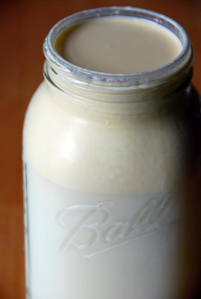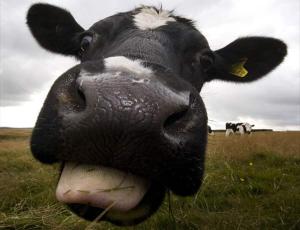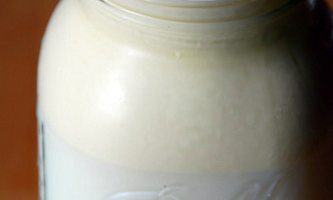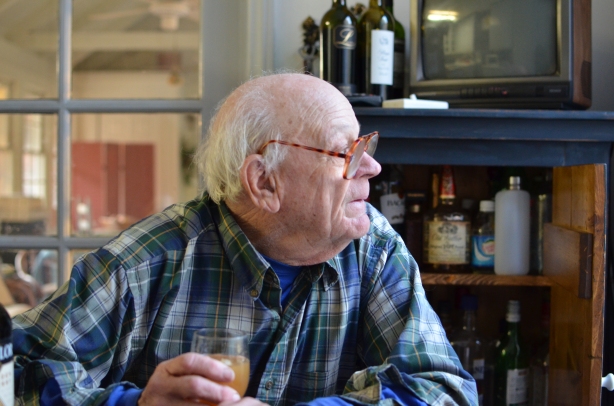So, is milk good or bad for you? The answer to this is both complex and not. As in, yes, it’s good, and yes, it’s bad. That’s why it’s complex. But the reason why the answer is complex is pretty simple. Read me?

The cream rises to the top, and cream is good. (That’s why we have that saying in reference to people, remember?)
Anywhere you look for information about milk and people’s relationship with it you’ll find conflicting information (okay, you already know this, because you’re the type of person who’s reading a blog like this in the first place). Part of the reason why there are so many differing views is not only because people are different, but also because the milk they’re drinking (or eating in whatever form) is different.
You’ve probably heard of raw milk advocacy. But do you understand what the big deal is? If hippies love peace so much, why do they get all high and mighty about certain issues—issues that can inspire federal agents to raid the property of raw milk dealers (after spending tens to hundreds of thousands of dollars subjecting them to surveillance for more than a year prior, then hijacking $70,000 worth of computers, files, cash, and perishable produce, and pouring out gallons of raw milk, even though in their entire twelve years doing this their product had caused no health problems whatsoever)? Perhaps a better question would be why the heck, in our free country, federal dough and energy is being expended on stopping the sale of something that never caused harm before Big Ag(riculture) stepped in…
So those raw milk lovers must sincerely believe that raw milk is amazing, that it shouldn’t be altered from its original form, and that people deserve access to raw milk so they can be healthy and raise healthy kids. Don’t agree or disagree with this until you know at least half as much as they do on the subject. I’m going to try to help us get at least some of the way there.
There is a colossal difference between the milk that our ancestors consumed and the milk that is consumed in the modern world. About 40,000 years ago the human race had a population explosion when they figured out that land that wouldn’t support farming would support grazing animals. This epiphany, that otherwise essentially unusable land, sunlight, and vegetation could be converted by animals into healthy food, changed the game considerably. Humans were no longer dependent on only what small game could survive in particular areas, but could now drink milk and eat meat more often.
Most human bodies switch off the gene to digest lactose after Mom cuts them off from the boob. My own mom claims I bit her so she stopped nursing abruptly, so of course I attribute certain neuroses to this shock – for example, I eat too damn much because I’m afraid it may disappear at any moment.
Interestingly, while some people have a milk protein (casein) allergy, someone who is only lactose intolerant should be able to eat all fermented forms of milk, i.e. cheese, yogurt, kefir, and so on, because the fermentation process breaks down the lactose. In cultures where humans continue drinking milk post-weaning, lactose intolerance is rarely an issue.
But here’s where I’m really going: Raw milk IS superior to the homogenized, pasteurized shadow of milk that is all that’s commercially available now. Here are the aspects of processing that make modern-day milk so blech . . .
- Pasteurization, i.e. heat, denatures proteins and kills friendly bacteria, which keeps less friendly bacteria from causing you harm.
- Homogenization explodes fat droplets in milk. According to Deep Nutrition, when you magnify a drop of fresh milk on a slide 10,000,000 times, you can see incredibly complex casein micelles. “Imagine a mound of spaghetti and meatballs formed into a big, round ball. The strands of spaghetti are made of protein (casein) and the meatballs are made of the most digestible form of calcium phosphate, called colloidal calcium phosphate, which holds the spaghetti strands together in a clump with its tiny magnetic charge. This clumping prevents sugar from reacting with and destroying milk’s essential amino acids.” To make a long story short, every globe of fat is enclosed within a membrane of sorts. The lipid bylayer within has a lot of specialized proteins that perform particular tasks, and as long as that membrane stays around that lipid blob, “the fat is easily digested, the gallbladder doesn’t have to squeeze out any bile for the fat to be absorbed, the fatty acids inside the blob are isolated from the calcium in the casein micelles, and everything goes smoothly. But if calcium and fats come into contact with one another . . . milk loses much of its capacity to deliver nutrients into your body.” Homogenization has been linked to heart disease as well (and though that idea is refuted by some, they never appear to take the above breakdown into account).
- So, not only is high heat and homogeneity in general terrible for humans, it’s also terrible for the milk that humans drink. Once pasteurized and homogenized, those fat globules are all the same tiny size (now small enough to enter your bloodstream and wreak mucosal havoc instead of staying in your belly where they belong) and “lack the sophisticated bylayer wrapping and are instead caked with minerals and tangled remnants of casein micelles.” The high heat has caused the sugar to react with the amino acids, which denatures the proteins and removes the colloidal calcium phosphate from the equation. Your spaghetti matrix becomes ten times as tangled as your headphone cords and is more tightly wound than your boyfriend the day before his thesis proposal is due. That friendly meatball of colloidal calcium has gone on to fuse with those fatty acids and now they form a soap-like goo made of milk-fat. This saponification reaction can not only irritate the crap out of people’s GI tracts but make the very nutrients we’ve been led to believe we should drink milk for pretty much good for nothing, or at least pretty close.
- Processing destroys the signal molecules that let your body recognize milk as its buddy, instead causing it to react more like it’s an alien invader, which, after running the past.-homo. gauntlet (is that a nickname that works? or not?) it basically is.
But could raw milk be dangerous? Sure, if it’s from any of the millions of unhealthy cows fed a diet of corn and grain that’s foreign to their digestive tracts, who suffer not just from massive amounts of gas buildup (which according to some sources accounts for 1/3 of global warming emissions) but also from painful mastitis due to prolific use of recombinant bovine growth hormone. Painful for the cow and yuck for you (pus and blood, anyone?). Milk from healthy cows is an entirely different story. Your raw milk comes from a cow who is pasture-raised in the sunshine, eating grass and the insects upon it from pasture that is often otherwise untenable for agriculture. And like a thousand generations before you, give or take, people can and do flourish on this whole food. 
Even better, when raw milk sours it doesn’t go rancid like pasteurized milk does, but instead becomes buttermilk. Seriously. Because pasteurized milk has no beneficial bacteria or probiotics left, it just rots. It might be difficult for regular milk drinkers to grow accustomed at first, but soured milk is great for making yogurt, cheese, buttermilk biscuits, plus loads of other options you can find all over the internet on blogs like The Healthy Home Economist. Plus, you can use it to soak your grains in to break down the phytates that negatively affect digestion as well as add it to other foods to render them more digestible. Yep, soured raw milk is actually better for you than it was before, and, just like other fermented foods, is terrific for your guts.
So, if you’re lucky enough to live in one of the eight states where you can buy raw milk on the shelf of your local natural food store (Arizona, California, Connecticut, Maine, Pennsylvania, South Carolina, New Mexico, and Washington – though I’ve yet to see it at corporate groceries), go forth and get it! And if you live in a less-free state, ask around, google it, check with your local or nearby WAPF chapter. If you don’t yet want to take the plunge into sour milk recipes and want to go the slow intro route, freeze it in separate jars and use it a little at a time so it doesn’t ferment while you’re easing into the idea. And if you want to take a little more control over the souring process, you can buy starters from Cultures for Health to do just that. You might just turn into one of those raw milk advocates yourself.























